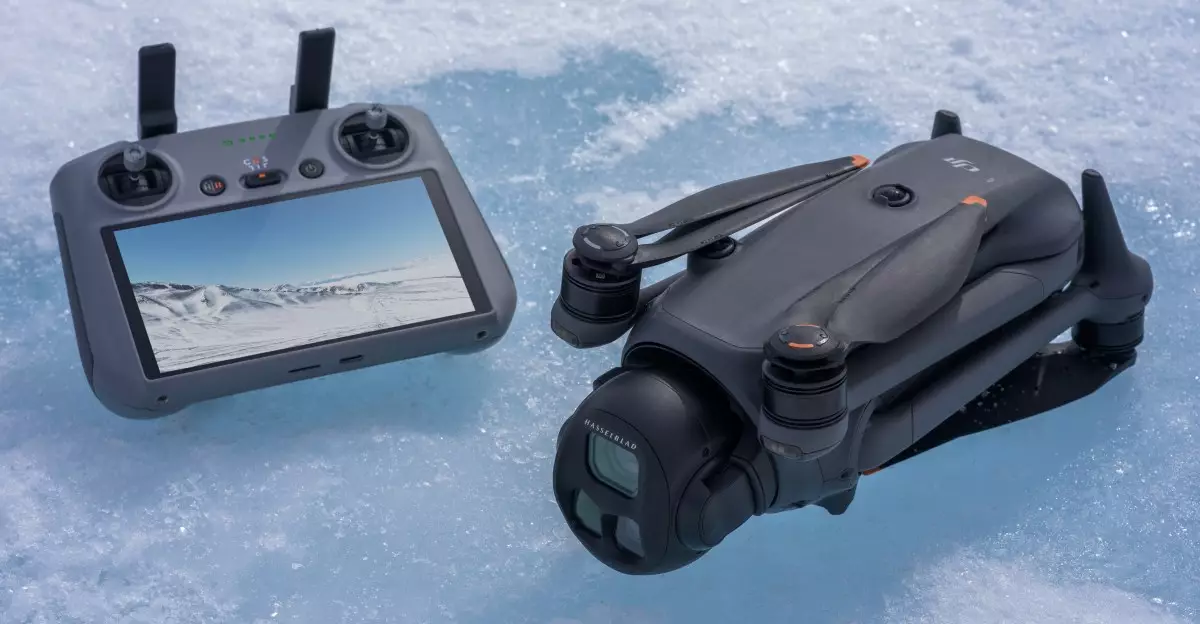The world of drones is often enveloped in excitement, innovation, and the occasional controversy, but the recent debut of the DJI Mavic 4 Pro has thrown the industry into a whirlwind. In an unexpected turn of events, DJI, traditionally regarded as a leading manufacturer in the drone space, has decided to release its latest model in the United States despite previously stating that it would bypass the market due to regulatory challenges, particularly surrounding tariffs imposed during the Trump administration. This unforeseen availability from U.S. retailers, notably Adorama and B&H, raises questions about the underlying motivations of both DJI and these retailers, while igniting a palpable enthusiasm among tech enthusiasts and aerial photographers alike.
Retail Maneuvers That Defy Expectations
As reports surfaced of the Mavic 4 Pro being listed for sale, with Adorama claiming to have a limited stock, the immediate response from the public was nothing short of electrifying. With prices set at $2,699 for the base model, $3,549 for the Fly More Combo, and $4,649 for the Creator Combo including the advanced RC Pro 2 controller, interest surged. But here’s where it gets intriguing: B&H issued a press release outlining preorders for a product that theoretically shouldn’t even be on the market in the U.S. It seems as if these storied retailers are riding a fine line between compliance with DJI’s apparent embargo and the consumer’s voracious appetite for cutting-edge technology.
In a conversation with Miguel Perez from B&H’s drone department, the ambiguity became evident. He acknowledged the complexities in getting these drones from China to the U.S., hinting at a logistical grey area that could provide a loophole allowing these retailers to capitalize on the demand. This scenario is reminiscent of a high-stakes chess game where every move involves blind spots and hidden strategies, raising further questions about how the market dynamics are shifting in this high-tech sector.
The Allure of the Mavic 4 Pro
The Mavic 4 Pro boasts impressive specifications that are bound to appeal to both hobbyists and professionals. With features that include enhanced flight time, improved camera capabilities, and a user-friendly design, it appears to set a new standard in consumer drone technology. However, the existence of the drone in the U.S. raises essential concerns about its distribution and the implications of tariffs. It’s a reminder of the ongoing battle between innovation and regulation, not just for DJI but for all tech firms navigating international waters.
The excitement is palpable, but so are the risks. Retailers like Adorama and B&H might be fueling consumer demand on grounds that could soon turn sour if DJI decides to halt their sales or if government regulations swing back into the limelight. In a society that thrives on the new and the innovative, the rush to incentivize early adopters could very well backfire if the devices are quickly yanked from the shelves.
Glitches in the Matrix: DJI’s Communication Dilemmas
Adding to the unpredictability, DJI’s communication—or lack thereof—has painted a confusing picture. By not sending units for review or providing a straightforward pricing strategy for U.S. consumers, they have left retailers and customers alike in a state of uncertainty. It’s a strategy that might reflect a desire to control the narrative around their product launch, but it also smacks of disorganization during a time when global perception is vital for a company that wields considerable influence in the drone market.
As journalists and influencers scramble to connect the dots, the absence of a clear directive from DJI complicates matters. Are they ill-prepared for the potential fallout, or is this a calculated risk aimed at re-establishing their foothold in the North American market? The narrative focuses on the allure of cutting-edge technology, yet the undertones of confusion reveal the complex interplay of global business logistics and strategic positioning.
The Consumer’s Dilemma: To Buy or Not to Buy?
For consumers, the question looms: Is it worth taking the plunge and securing a Mavic 4 Pro before stocks run out, or does the underlying uncertainty deserve caution? The thrill of being among the first to own a revolutionary product can drive impulsive purchases, but the lingering cloud of potential unavailability and regulatory complexities merits thoughtful consideration.
In a landscape increasingly dominated by drone enthusiasts eager to capture breathtaking vistas or develop a passion into a profession, the Mavic 4 Pro represents both an opportunity and a risk. This scenario serves as not just a case study in consumer behavior, but also highlights the ever-evolving relationship between technology companies, consumers, and government regulations. The stakes are high, making it an exhilarating time to be involved in the world of drones.

